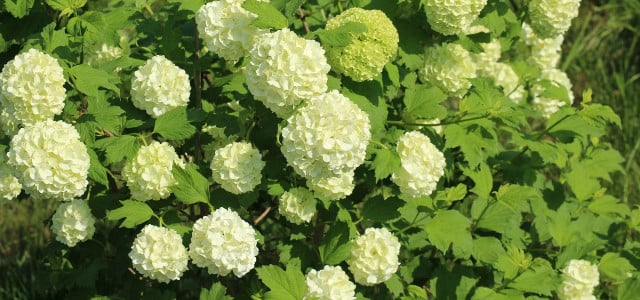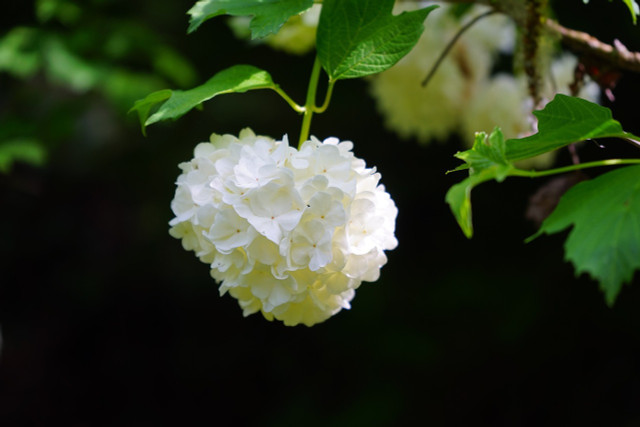
The snowball plant is a popular ornamental plant for gardens and parks. Here you can learn about planting time, sowing and care.
Contents
The snowball plant as a useful plant
The snowball plant (Viburnum) is a genus of plants from the muskweed family. Among the snowballs there are over one hundred different species. Characteristic of these uncomplicated shrubs are their lush white flowers, which resemble puffy balls. Individual cultivated forms bear pinkish to reddish flowers. The snowball plant is well suited as an ornamental plant for gardens and parks. It is adapted to domestic weather conditions and requires little care.
In particular, the “common snowball”, which is native to our region and is also called “chokeberry”, “heartberry”, “bloodberry” or “goatball”, is also known as a useful plant. Although the plant is commonly classified as toxic, its ingredients – used in moderation – are said to have healing properties. For example, substances extracted from the bark are used to relieve cramps. In Eastern European countries in particular, the bright red berries are also crushed in boiling water and drunk as a cold tea.
Ecologically advantageous: The “common snowball” is particularly popular in our latitudes with birds, which help themselves to the fruits in summer. The variety “Wooly Snowball” also forms attractive fruits for birds – but these are deep black. In parks and gardens you can find numerous other pretty varieties, such as the “True double snowball”. These develop particularly splendid and well-scented flowers, but do not bear fruit. Grafted cultivars are often less attractive to birds and insects because of the double flowers.
Location and planting time of the snowball plant

The snowball is an uncomplicated and robust plant. If you choose the right location and water regularly, you will enjoy this pretty shrub for many years.
Ideal location
Most snowball species prefer full sun. Therefore, a south-facing location is ideal. However, locations in partial shade are also well tolerated. The more sun your snowball gets, the more profusely it will bloom. It is important that the chosen site is as sheltered from the wind as possible, for example against a house wall or along a wall.
As for the soil, it should be kept constantly moist. The snowball also tolerates light moisture well. The soil should generally be rich in humus and permeable. Only the “Wooly Snowball” is an exception among plants and prefers somewhat drier soil.
Planting the snowball
The ideal time for planting the snowball is in the spring or fall. Snowballs grow up to three feet tall. In the open ground, you should therefore place several plants in the ground with sufficient spacing.
Care: pruning and fertilizing snowball plants

Pruning the snowball plant
Snowball plants remain lush and green for years and hardly develop deadwood. Pruning is therefore not absolutely necessary. However, if your snowball grows over your head or you want to shape it, pruning is easily done. You can thin out particularly lush bushes by simply removing individual branches near the ground. Always make sure to use sharp pruning shears. This is the only way for the cuts to heal properly.
The snowball develops flowers only on two-year-old shoots. After radical pruning, you must therefore first expect a lack of flowering. However, it is usually sufficient to simply thin out the shrub evenly immediately after flowering in June or July.
Fertilizing
If the location is suitable, you do not need to fertilize your snowball plant additionally. The plants draw all the nutrients they need from the soil.
Wintering
Frost-sensitive species should ideally be cultivated in large containers and brought inside from October. Here they can overwinter well at temperatures around 10 degrees Celsius. The “Mediterranean snowball” (Viburnum tinus) is one of the cold-sensitive varieties. Winter-hardy varieties, on the other hand, can overwinter outdoors without hesitation. However, it is advisable to cover their root balls with a protective layer of bark mulch, autumn leaves or brushwood before winter sets in. In winter, you should also make sure that the roots of all snowball species do not dry out.

